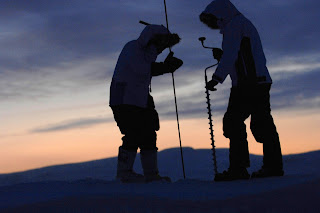 EcoConnect hosts a series of events called 'Green in the City' designed to connect City decision makers with green technologies. Green in the City is all about making connections to increase business take-up of green technology.
EcoConnect hosts a series of events called 'Green in the City' designed to connect City decision makers with green technologies. Green in the City is all about making connections to increase business take-up of green technology.This month’s event took place at the IOD in London and had a fantastic panel of industry experts, chaired by Dan Ilett (Greenbang.com), Steve O’Donnell (The Hot Aisle), Andrew Romans (The Founders’ Club and Georgetown Venture Partners), Anne McIvor (Cleantech Investor) and Douglas Lloyd (Venture Business Research).
The evening was very interesting and is one that people in this industry should go out of their way to attend. Some good points were raised and discussed; below is a collection of key points that I took away from yesterday’s meeting of minds:
The general consensus on ‘does the city understand clean tech?’ was the VC & earlier stage players are getting to grips with the technology well. The wider City is further behind, but does have a level of understanding and is showing more interest.
Clean Tech is a hot investment space at the moment and one the city wants to be a part of. However, this is not Dot.com – Clean tech requires much more initial cap-ex (think of the hardware & assets required and their costs, which can run into millions) and takes far longer to exit. There is no ‘develop a software solution, take to market and flip it’ in this industry.
Looking at the different sources of cash – IPOs are dead at the moment, some clean tech firms floated too early and they are now suffering the consequences.
Also looking at the levels of money going into this space, the exact amount of cash differs depending on the source, but the trend is unmissable. 2002 saw $200 million invested in this space, and the following consecutive years saw $400 million, $800 million, $1.2 billion, $2 billion, $4 billion, and anywhere between $8 & $16 billion in 2008! This is total investment from N. America, Europe, India and China.
So there is lots of good news in this industry as a whole, but (and there is always a but!) the UK is in danger of being left behind.
If we look back 20 years, Germany and Denmark etc. identified Wind Turbines as a great technology, researched them and began manufacturing. Now, there is little choice – you have to turn to Europe for a macro wind manufacturer.
The same sets of scenarios are developing in the UK and our government needs to alter this and quickly. Look at the US and Obama’s £800 billion rescue package and how much of that cash is going to be spent in clean tech – this is money that HAS to be spent or the government will take it back! Other European governments are also pouring cash into the space. We need the same support or we will miss the boat.
Overall, the event was a very good and I hope to see more of you there next time!
By Steven Rogers
Sector Lead for Carbon and Renewable Energy Engineering














